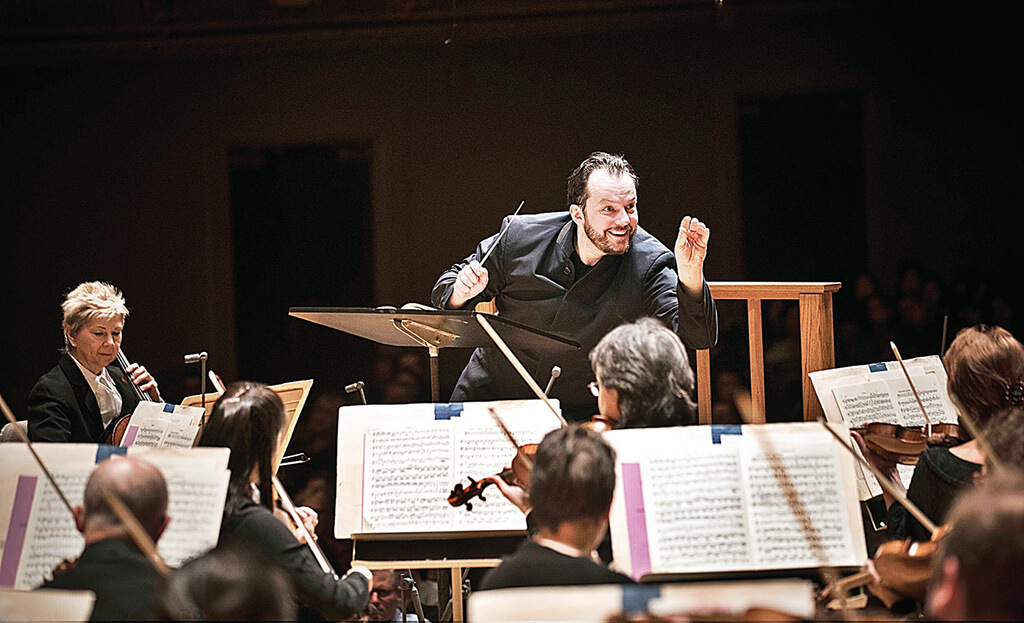
Shostakovich: Symphony No. 4 in c minor Op. 43. Symphony No. 11 in g minor The Year 1905 Op. 103. Boston Symphony Orchestra/Andris Nelsons. DG B0028595-02. Total Time: 127:03 (2 CDs).
This 2-CD set is the fourth installment in the Boston Symphony’s Shostakovich cycle and it is another winner. Music director Andris Nelsons and his players are dialled in all facets of the Russian composer’s musical persona and are beneficiaries of one of the world’s best concert halls, Boston’s Symphony Hall. Not coincidentally, in 1959 Leonard Bernstein and the New York Philharmonic travelled to this legendary venue to make their best Shostakovich recording: the Symphony No. 5.
Composed in 1936, Shostakovich’s Symphony No. 4 was not performed in public until 1961. The original premiere was cancelled by the Soviet authorities on the grounds that it was too difficult and too pessimistic. What the authorities wanted was music that was easy to understand, music that would inspire the masses.
No less pessimistic today than it was in 1936, Symphony No. 4 is nonetheless one of Shostakovich’s finest works. Although its long slow ending expresses the essence of despair, elsewhere it overflows with creative energy — even humour.
Nelsons chooses a rather quick tempo for the first movement (marked Allegretto con moderato) compared to other conductors, including Simon Rattle and Bernard Haitink. To my ears, this quicker tempo makes sense, as it prevents the music from becoming lugubrious.
The performance quality on this CD is wonderful, with distinguished solo playing from all sections of the orchestra. And then there is the lightning fast fugue halfway through the movement, in which the first violins lead off with their seemingly endless volleys of sixteenth notes followed soon after by the violas, second violins and cellos doing the same thing. This is thrilling virtuoso playing of the highest order. The final pages of the last movement, with their colourful and original orchestration, are eloquent and moving. Double basses and harps provide a sonorous foundation in octaves on the note ‘C’ through the last five minutes or so, followed by a delicate repetitive motive on the celesta. Trumpet and timpani solos and sustained upper strings are added to the mix — mournful, but magical too. The acoustics of Symphony Hall and the DG engineers capture the music on disc brilliantly.
Symphony No. 11, dating from 1957, is a very different kind of piece. While the Fourth is what one might call ‘pure music’, the Eleventh is clearly programmatic, depicting the events of “Bloody Sunday,” January 9, 1905, when Cossack horse guards opened fire on a peaceful demonstration in St. Petersburg. Hundreds of protesters were killed. Shostakovich makes use of revolutionary folk songs in his symphony to honour those who fell that day. Once again, Nelsons and the Boston Symphony give us playing of extraordinary expressiveness. The colours and textures in the opening bars — the grim foreshadowing of what is to come — touch one’s very soul. The third movement is equally sublime, opening with incredibly precise pizzicati in the cellos and basses, leading to a long, beautiful melody for the violas; it could hardly be played more eloquently than it is in this performance. The actual charge of the Cossack horsemen is depicted by the composer with blood-curdling forcefulness. In Russian musical literature “The Battle on the Ice” in Prokofiev’s score for the film Alexander Nevsky is a classic musical depiction of this kind of brutal event, but the comparable passage in Shostakovich’s Symphony No. 11 is even more terrifying. The BSO percussionists give it everything they’ve got and once again, Symphony Hall and the DH engineers render this great music-making as vividly as I have ever heard it.
In addition to the exceptional quality of these performances, with the notes in the booklet accompanying the CD set, DG has enhanced its production even further by paying tribute to a long-time member of the Boston Symphony. Vyacheslav Uritsky, who has been a member of the second violin section of the BSO for more than 43 years, also played in the very first performance of Symphony No. 4 in December 1961, with Kirill Kondrashin conducting the Moscow State Philharmonic. Uritsky also played in the first Odessa performance of Symphony No. 11, in the presence of the composer.
Music-lovers who don’t mind travelling some distance to hear exceptional performances should note that Andris Nelsons and the Boston Symphony are scheduled to play the Shostakovich Symphony No. 4 at Tanglewood August 17 this year, at the Proms in London September 3, in Hamburg September 5, Vienna September 11, Lucerne September 12 and Amsterdam September 17.
- SCRUTINY | TSO Lets Berlioz Do The Talking In Season Opener - September 21, 2018
- RECORD KEEPING | Even Yannick Nézet-Séguin Can’t Make Us Love Mozart’s La Clemenza di Tito - September 6, 2018
- RECORD KEEPING | Giovanna d’Arco With Anna Netrebko Explains Why The Best Operas Survive - August 30, 2018



